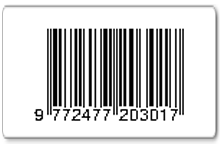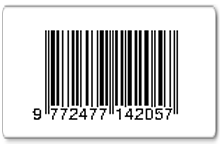The Effectiveness of Android-assisted Optical Devices Learning to Improve Students’ Conceptual Understanding
Abstract
This research aims to find the effectiveness of Android-assisted optical devices learning to improve students’ conceptual understanding. This research was a quasi-experimental research with a pretest-posttest design. This research involved 60 second year high school students in West Kutai Regency, East Kalimantan. The instrument for the data collection was comprehension questions about conceptual understanding on optical devices tested through pretest and posttest. The conceptual understanding data was analyzed using anava mix design. The result shows that learning optical devices using an android application is more effective in improving students’ conceptual understanding compared to conventional learning which is not using an android application
Keywords
Full Text:
PDFReferences
Amin, T G & Levrini, O 2018, Converging perspectives on conceptual change, Routledge, New York
Anderson & Krathwohl 2010, A Taxonomy for learning, teaching, and assessing (A revision of Bloom’s taxonomy of educational objectives), Abridge Edition, David McKay Company, New York
Anggraeni, RD & Kustijono, R 2013, ‘Pengembangan aplikasi media animasi fisika pada materi cahaya dengan flash berbasis android’, Jurnal Pendidikan Fisika dan Aplikasinya, vol. 3, no. 1, pp. 11-8
Blikstein, P, Fuhrmann, T, Greene, D & Salehi, S 2012, ‘Bifocal modeling: mixing real and virtual labs for advanced science learning’, Proceedings of the 11th International Conference on Interaction Design and Children, ACM, USA, pp. 296-9
Chiu, JL, Dejaegher, CJ & Chao, J 2015, ‘The effects of augmented virtual science laboratories on middle school students’s understanding of gas properties. Computers & Education’, vol.85, pp. 59-73
Daryanto 2010, Media Pembelajaran, Gava Media, Yogyakarta
Fatimah, S & Mufti, Y 2014, ‘Pengembangan media pembelajaran IPA-fisika smartphone berbasis android Sebagai Penguat Karakter Sains Siswa’, Jurnal Kaunia, vol. 10,no. 1, pp. 59-64
González MÁ, González, MÁ, Martín, ME, Llamas, C, Martínez, Ó, Vegas, J, Herguedas, M, and Hernández, C 2015.’Teaching and Learning Physics with Smartphones’, J. Cases Inf. Technol, vol. 17, no. 1, pp. 31-50.
Gurel, DK , Ali KE & McDermott, LC 2015, ‘A review and comparison of diagnostic instruments to identify students ’ misconceptions in science’, Eurasia Journal of Mathematics, Science & Technology Education, vol. 11, no. 5, pp. 989-1008.
Hodijah S R N, Sudiana R, Murni D 2018, ‘The Effectiveness of Scaffolding Based Virtual Class to Improve Student’s Logical Thinking Ability’, Jurnal Penelitian dan Pembelajaran IPA, vol. 4 , no. 1, pp. 51-9
John, M, Molepo MJ & Chirw M 2018, ‘Secondary school learners’ contextualized knowledge about reflection and refraction: a case study from South Africa, Physics Education, vol. 36, no. 2, pp. 131–46
Kuhn, J, & Vogt, P 2015, Smartphones in physics education: Effects of learning with new media experimental tools in acoustics, In W, Schnotz (Ed,), Multidisciplinary Research on Teaching and Learning, Macmillan Publishers Limited, New York
Langitasari I, Effendy & Fajaroh F 2018, ‘Dynamic and static modeling embedded in inquiry learning to Improve student’s multiple representation ability’, Jurnal Penelitian dan Pembelajaran IPA, vol. 4, no. 1, pp. 1-13,
Liliarti, Nina & Kuswanto, H 2018, ‘Improving the Competence of Diagrammatic and Argumentative Representation in Physics through Android-based Mobile Learning Application’, International Journal of Instruction, vol. 11, no.3, pp. 106–22.
Prasetyaningsih & Wilujeng I 2016, ‘Analisis kualitas pengelolaan kelas pembelajaran sains pada SMP SSN di Kabupaten Pati’, Jurnal Penelitian dan Pembelajaran IPA, vol. 2, no. 2, 147-65
Stantchev, V, Colomo-Palacios, R, Soto-Acosta, P, & Misra, S 2014, ‘Learning management systems and cloud file hosting services: A Study on students’ acceptance’, Computers in Human Behavior, vol. 31, pp. 612-9.
Stat Counter 2018, Mobile operating system market share indonesia, viewed 12 October 2018, .
Streveler, RA, Brown, S, Herman, GL & Montfort, D 2014, ‘Conceptual Change and Misconceptions in Engineering Education’, in A Johri & BM Olds (eds), Cambridge Handbook of Engineering Education Research, chapter, Cambridge University Press, Cambridge, pp. 83–102.
Vieyra, R, E,, & Vieyra, C 2014, ‘Analyzing forces on amusement park rides with mobile devices’, The Physics Teacher, vol. 52, no. 3, pp. 149-51
Wang, M 2015, E-learning in the workplace w performance-oriented approach beyond technology. Springer International Publishing, Cham
Yadiannur, M., & Supahar 2017, ‘Mobile Learning Based Worked Example in Electric Circuit (WEIEC) Application to Improve the High School Students’ Electric Circuits Interpretation Ability’, International Journal of Environmental and Science Education, vol.12, no.3, pp.539 -58
Yang, E 2016, ‘Use of a mobile application to help students develop skills needed in solving force equilibrium problems’, The Physics Teacher, vol. 54, pp. 108-11
Yektyastuti, R & Ikhsan, J 2016, ‘Pengembangan media pembelajaran berbasis android pada materi kelarutan untuk meningkatkan performa akademik siswa SMA’, Jurnal Inovasi Pendidikan IPA, vol.2, no.1, pp. 88-99
Zatarain-Cabada, R., Alor-Hernández, G., Barrón-Estrada, M. L., Colomo-Palacios, R., & Lin, H. C. K 2016 ‘Guest Editorial: Intelligent and Affective Learning Environments: New Trends and Challenges’, Educational Technology & Society, vol. 19, no. 2, pp. 1–4.
DOI: http://dx.doi.org/10.30870/jppi.v4i2.4038
Refbacks
- There are currently no refbacks.
Copyright (c) 2018 Jurnal Penelitian dan Pembelajaran IPA

This work is licensed under a Creative Commons Attribution 4.0 International License.
Jurnal Penelitian dan Pembelajaran IPA is licensed under a Creative Commons Attribution 4.0 International License
Copyright © 2023 Jurnal Penelitian dan Pembelajaran IPA. All rights reserved.






